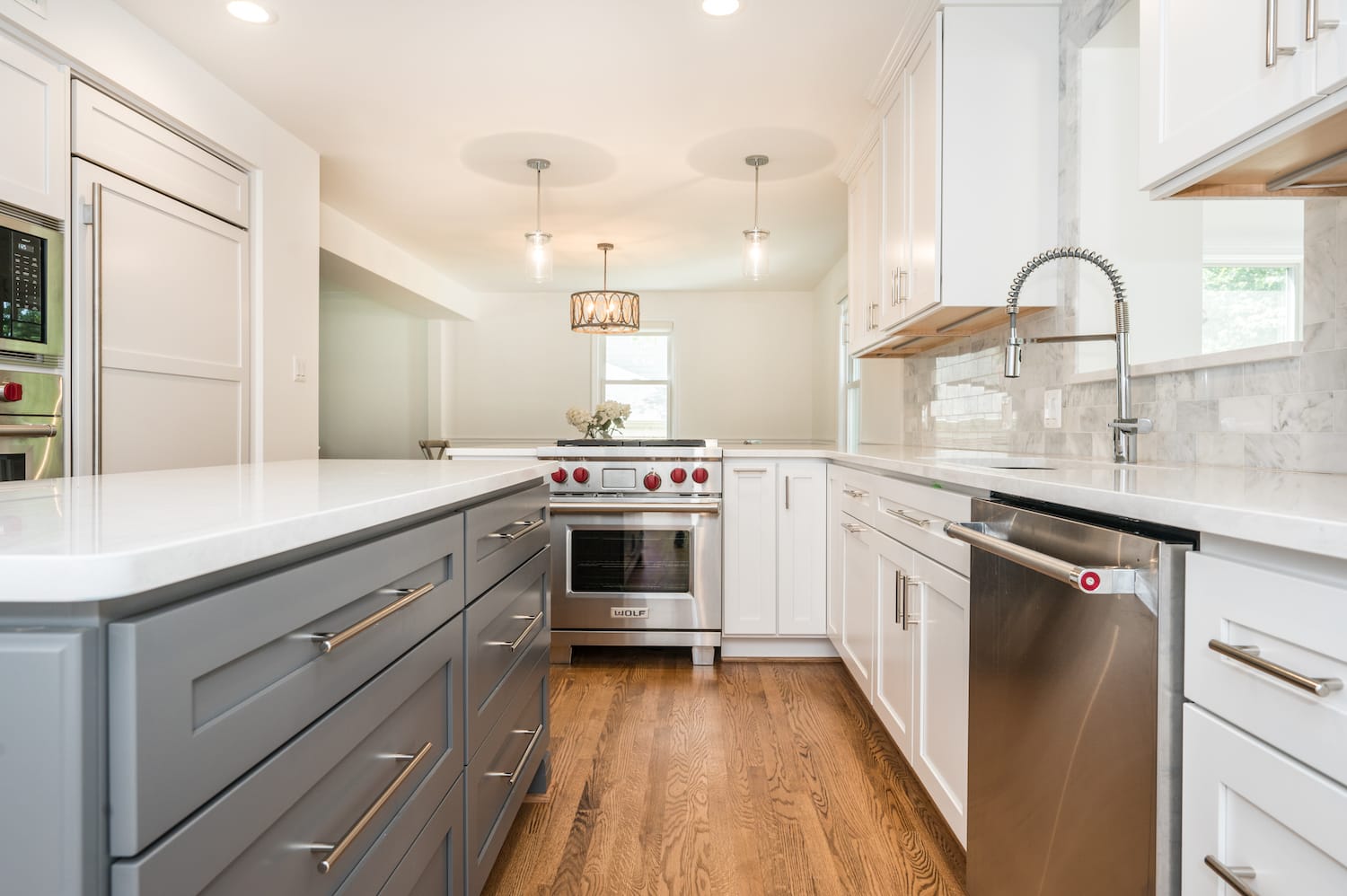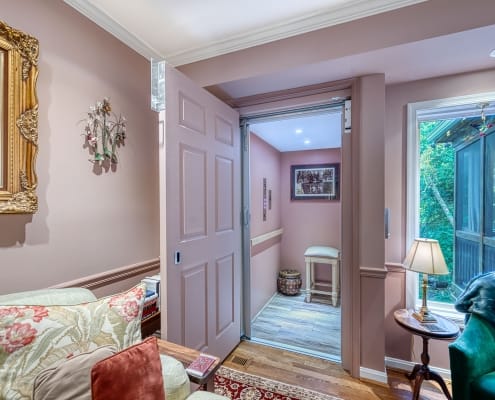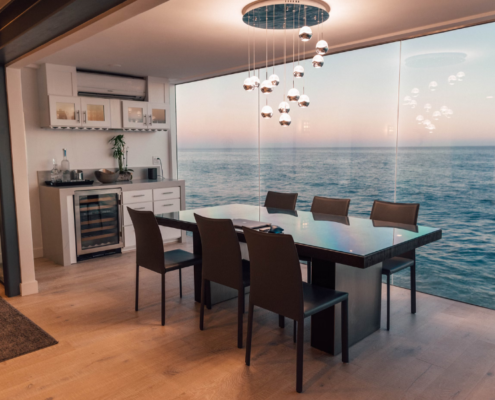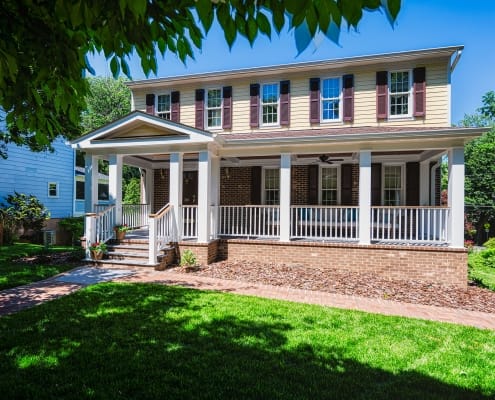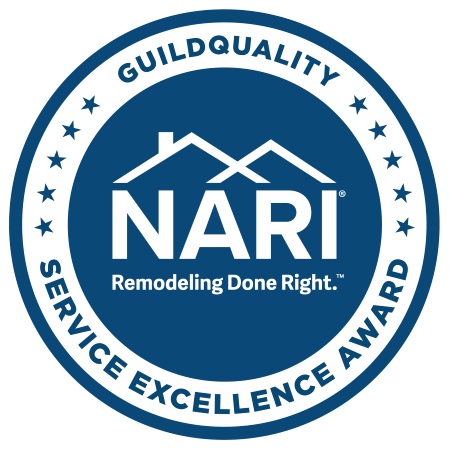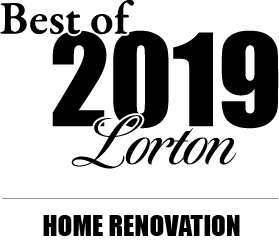Top Reasons to Remodel your Kitchen
The National Kitchen & Bath Association offers advice on when and why to update.
Many homeowners think their kitchen is outdated from the looks of their worn cabinets, dated appliances and crackled countertop. What they may not realize is that there are many other reasons, more important than cosmetic, why a kitchen needs to be remodeled.
The National Kitchen & Bath Association (NKBA) offers the following tips to help homeowners evaluate the current condition of their kitchen and decide if the time is right for a remodel.
Adequate space: Are you satisfied with the amount of counter space, cabinet space and floor space in your kitchen? The position of your refrigerator or shape of your counter may be taking away useful workspace. According to the NKBA Kitchen and Bath Planning Guidelines, when replacing a countertop or changing the shape of your kitchen, keep in mind that a total of 158″ of countertop frontage, 24″ deep with at least 15″ of clearance above, is needed to accommodate all uses, including landing area, preparation/work area and storage.
Traffic flow: If there’s more than one cook in your household, you may want to consider making more room around the main workspace. If you enjoy entertaining, you may want an open plan kitchen that allows for more social interaction between the kitchen and other rooms. According to the NKBA Kitchen Planning Guidelines, the width of a walkway should be at least 36″ and the width of a work aisle should be at least 42″ for one cook and at least 48″ for multiple cooks.
If you would like to talk about ideas for remodeling or renovating your home in Fairfax, Mclean, Springfield, Woodbridge, Alexandria, Arlington, and Falls Church VA, reach out to us at Foster Remodeling. Call now for a free consultation!
READ MORE…
article from National Kitchen and Bath Association
It’s Remodeling Season. Vet Your Candidates Carefully
It’s Remodeling Season. Vet Your Candidates Carefully!
You’ve been dreaming of that new kitchen makeover, bathroom renovation, or addition for years, and now you’re ready to make it a reality. Selecting the right home remodeling company can be the difference between realizing your dream and ending up in a living nightmare. At first glance, all the candidates may look very similar and tell you what you want to hear. But what happens when you start asking the tough questions. The strong contenders won’t shy away, sweat under the spotlight, or try to redirect your attention to one of their talking points. They’ll welcome the scrutiny and answer your questions directly and thoroughly. Once properly vetted, only the strong will remain, the ones worthy of your vote and your hard earned investment dollars. Here are some key issues to raise as you evaluate the nominees.
What Kind of Track Record Do They Have?
How long have they been in business? What kind of references can they provide? Is it an extensive list where you can call and speak to whoever you want? Or do they just present a list of rather anonymous testimonials? “Steve in McLean, Mary in Alexandria… etc”. When you ask for references does it take days or weeks for them to get back to you? These are signs that they may have a hard time pleasing customers consistently or have something to hide.
Does their Rhetoric Pass Your Fact Check?
Don’t just take their word for it. Do your own investigating and independently verify their claims to be true. Reliable 3rd party sources, such as www.guildquality.com, the nation’s leader in customer satisfaction surveying for the building industry, provide hard data on how companies measure up, as well as reviews from previous clients. Consumer Checkbook is another vetting source. They provide not-for-profit ratings of local service companies. Angie’s List, Yelp and Google are also useful tools. Check them all. Some companies may have a few glowing reviews on one sight and a few scathing digs on another. Opinions vary, but listen for common themes. The reliable metric is a combination of quantity and quality.
Do They Have a Plan?
A renovation is a complex project that requires detailed preplanning and skillful execution. The more through and detailed the plan, the smoother the execution will go. That being said, unforeseen circumstances will occasionally arise. For the unprepared, a minor setback, such as a part damaged in shipping or a weather emergency, could create a bottleneck that delays the overall project. A reliable firm will have a comprehensive plan with built-in contingencies to stay on track.
Do they Have their House in Order?
Do the companies you are considering have a “bricks and mortar” office or showroom you can visit, or do they operate out of a truck with a website and 800-number. Be sure to get a copy of their business license and current certificate of insurance. What does their contract look like. Is it a professional document that is detailed yet easy for a layperson to understand, or is it a cryptic legalese that only a lawyer can decipher. Or worse, is it simplistic and vague. The home improvement industry has suffered many a black eye from shady contractors who disappear after a deposit has been given, or even worse, mid-project. If they do finish your project on time and on budget, what does their warranty cover. Remember, a warranty is only as good as the company providing it. If they go out of business, any warranty they’ve provided goes with them. Make sure the company’s foundation is as stable and secure as the one you’d have them pour for you.
Would You Trust Them to Hold Your Baby?
When you renovate your home, you are essentially inviting a stranger, or group of strangers into your house to tear it apart and put it back together again. Who are these people? How do you know you can trust them? A smart home owner will make sure everyone involved is properly trained, licensed, insured, drug tested and background checked. Taking these extra steps will result not only in peace of mind for the safety of your home and family, but also for the quality of the work being performed. If a problem should arise, those who go through the proper channels have recourse not available to those who gambled on a lower price, faster finish time, or some other carrot dangled to entice an easy victory.
When it comes to improving your home, vetting the candidates is a critical step. After all, once your vote has been cast, you’ll be living with the results for years to come. Choose carefully!
If you would like to talk about ideas for remodeling or renovating your home in Fairfax, Mclean, Springfield, Woodbridge, Alexandria, Arlington, and Falls Church VA, reach out to us at Foster Remodeling. Call now for a free consultation!
written by: Dory Clemens, Design Consultant – Foster Remodeling Solutions, Inc.
Making Your Home Accessible to Aging In Place
The oldest of the Baby Boomers (those born between 1946 and 1964) reached the age of 65 last year in 2011 and by 2030 the number of Americans over the age of 65 will soar to 72.1 million, 1 out of every 5 Americans! Given those numbers there is no question why we get so many calls here at Foster Remodeling on how to remodel an existing home to make it more comfortable and accessible for the homeowners as they age. In fact, according to a recent AARP survey, 73% of respondents strongly agreed with the statement “What I’d really like to do is stay in my current residence for as long as possible”. Most homes, especially in Northern Virginia, weren’t designed with long-term accessibility in mind, but there are several projects that can make you and your family more at ease with you staying in your home as long as possible.
Kitchens are great way to update a home’s accessibility and a valuable remodel that many can enjoy over the years. In the same AARP study, 75% of Boomers didn’t feel their current kitchen layout met their living needs; there are a few ways to update your kitchen. For this generation transitioning from a 42” bar height table or overhang to a 28” or 30” height is more accessible should one need a walker or wheel chair in the future. Also, because kitchen space is frequently used by Boomers and other generations alike a standard-height table or island for social gathering is ideal. Creating wider walkways or paths throughout the kitchen and adjacent rooms provides easier mobility. Storage options should be easily reachable and/or pull out, older cabinets without rollouts or few drawers can be taxing for those with back problems. Keep hardware in mind as well, for those suffering from arthritis or hand-mobility/gripping issues small knobs can be difficult, but larger pulls can be much easier to manipulate.
Another room where updates should be provided is the bathroom. Maneuverability should be a priority in a bathroom, providing a 60” turnaround (minimum size needed for a wheel-chair to turn) if the space allows or an acceptable T-turn space should be planned for. Creating a shower with zero-threshold allows for easy entry and exit into and out of the shower space with no tripping hazards. If a bathtub is a requirement, grab bars with adequate bracing behind them should be installed to ease entry and exit. Benches are also a high-demand item which can be built-in or installed as a fold-down to accommodate those who have problems standing. When thinking about faucets and shower valves, lever handles are much easier to manipulate and installing a separate handheld shower provides ease of use. Toilets have come a long way, and many companies have “comfort height” or ADA approved height versions which typically have a seat height of 17”-19” above the floor, a much easier location to lower to and rise from. Keep in mind that many of these features can be integrated into the overall design so it needn’t feel institutional or hospital-like. Many of our clients are surprised at how gorgeous their “universally designed” bathrooms are when the project is complete.
There are several small areas around the house that one should also think about when remodeling. With flooring, low or zero-thresholds between surfaces is important because of tripping hazards. Typically we recommended hardwood, laminate or tile flooring since it is a smooth surface that is easy to get around on and dust is less likely to collect on hard surfaces compared to carpeting for those with respiratory problems to consider. If you really feel more comfortable with carpet, consider a low pile height. Hardware on doors should be levers, as knobs again, can be difficult to manipulate. At the entry point of the home, creating a clear accessible path to a no step covered door is ideal, also providing a 36” wide opening of the door to accommodate walkers or a wheelchair. If possible, we’ve had many clients relocate their master bedroom to the first floor or add an addition to accommodate a first floor primary suite for themselves or aging parents.
As many of our clients or their parent’s age, we know what your concerns are and can help you plan for them. In a Genworth 2010 study of Cost of Care, they found the average cost of a 1 bedroom single occupancy assisted living facility was $38,220, multiply that by 5, 10, 15 years and you are looking at a large investment. For many families whether they are keeping parents in their own house or joining them into their own homes, we can guide you to make smart choices to keep you or your family as independent as long as possible. We know how important your home is to you, so whether you or a loved one is looking to remodel or update to accommodate your lifestyle give us a call.
Aging In Place Remodeling
“Aging In Place”
The comedian George Burns used to open his stand-up act with the line, “I’m very pleased to be here. Let’s face it, at my age I’m very pleased to be anywhere!” It’s a fact many of us try to avoid, but aging is unstoppable. We will hopefully all someday be as George Burns put it – just pleased to be here. This realization brings us to a valid question- wouldn’t you prefer to “be here” in your own home, surrounded by familiar things, and at peace with the knowledge your “golden years” will be spent in a safe and comfortable environment? Aging-In-Place is the ability to live in one’s own home for as long as possible through the incorporation of design principles, telecare and assistive technologies. We at Foster Remodeling Solutions have seen the need for residential design which allows for comfortable aging in one’s own home and have made this is a focus of our design-build firm.
The numbers speak for themselves – in 2008 persons age 65 or older numbered almost 39 million and represented approximately 12.8% of the U.S. population (that’s about one in every eight Americans). It is projected that by the year 2030 this population of 65 plus persons will grow to about 71.5 million or almost 20% of the population. In other words, one in five Americans will be facing the dilemma of how to live out their remaining years in comfort and safety without the trauma associated with being relocated to a family member’s home or an assisted-living facility. This trauma, also known as “relocation stress syndrome”, can lead to health problems and conflicts which could be avoided if the use of Aging-In-Place concepts are able to be incorporated into an aging person’s existing home. What determines the ability to create a functional and livable space for an aging person in their existing home can depend on numerous factors including: the condition of the existing home; the actual health of the individual; the proximity of health services in the local area; the availability of technology for home wiring and systems which will help facilitate an older person living alone in their own home for many years. A professional design-build firm that is trained and up-to-date on the latest products and ideas for Aging-In-Place, such as Foster Remodeling Solutions, is vital to creating a successful project.
Most of the general products and ideas for remodeling or building a home that fosters Aging-In-Place are self-explanatory. In addition, many of the principles used in Aging-In-Place design are also the same used for homes designed to the Americans with Disabilities Act (or A.D.A.) specifications. A.D.A. specifications require minimum hallway and doorway widths as well as required heights for items such as appliances, countertops and toilets. The basic idea is to create a space that allows for: ease of movement; ease of reaching and accessing items in the home; reducing maintenance and care of the home and the yard; creating well-lit spaces; and designing systems within the home for communication, safety and security that are easily operated by the elderly person. Some specific examples are:
Ease of Movement:
- 5’ turning or clear radius in the living area, kitchen, bedrooms and baths
- 36” minimum width hallways and doorways
- Eliminating steps into the home and within the home and promoting the use of ramps, elevators or lifts
- Incorporating non-slip flooring and grab bars
- Home designs that feature one-level living or remodeling existing main level space into livable space for an older person
Ease of Reaching and Accessing Items in the Home:
- Lowered windows and windows with easy-to-operate hardware
- Faucets and door hardware with lever handles versus knobs
- Lowered kitchen and vanity countertops with open space below
- Shower with curbless entrance, fold down seat and handheld showerhead
- Front loaded washer and dryer and kitchen appliances at usable heights
Reducing Maintenance and Care of the Home and Yard:
- Low maintenance exterior such as vinyl siding or brick
- Low maintenance trees and shrubs with elevated flowerbeds
- Shower stall with built-in antibacterial protection
- Appliances designed to report trouble back to the manufacturer electronically
- Easy to clean surfaces
Creating Well-Lit Spaces:
- Sensor light at exterior entry focused on door lock
- Light in the shower
- Lots of windows for natural light
- Task lighting in appropriate places
- Lighting in closets
Easily-Operated Communication, Safety and Security Systems:
- Entry door sidelight or lowered peephole with doorbell in accessible location
- Anti-scald and pressure-balanced faucets
- Light switches, thermostats and other environmental controls placed in accessible locations and not more than 48 inches above the floor
- Rocker or touch-activated switches
- Home security system direct wired to police, fire and EMS
These are just some of the design ideas that are incorporated into an Aging-In-Place project. A qualified design-build remodeler like Foster Remodeling Solutions can provide the expertise, care and customer attention that a project such as this requires. Aging-In-Place is a concept that will continue to grow and expand as our population ages. It is very likely many of us will be faced with these same challenges in our own homes at some point. For more information visit the National Aging In Place Council’s website at www.ageinplace.org.
For over 30 years, Foster Remodeling Solutions, Inc. has been offering kitchen remodeling, bathroom remodeling, in-law suites and home additions improvement services. Our service area extends to Fairfax, Mclean, Springfield, Woodbridge, Alexandria, Arlington, and Falls Church VA. Request for a FREE CONSULTATION at 703-550-1371 or visit us at 7211 Telegraph Square Dr, Lorton, VA 22079 today!
Ready To Get Started?
We’ve been transforming houses into dream homes for decades with experienced design-build remodeling. Enjoy a seamless process working with our talented designers and carpenters for kitchen remodels, bath remodels, home additions and whole home remodels. Our award-winning projects and unprecedented warranty help you love your home again.
Gallery Inspiration
Testimonials
Blog And Latest News
Award-Winning Remodeling
Our designs and customer service are award-winning! Leading remodeling organizations and local press have bestowed top marks on our team for their superior service and talented design-build. With a perfect process behind every project, you can count on Foster Remodeling Solutions.
